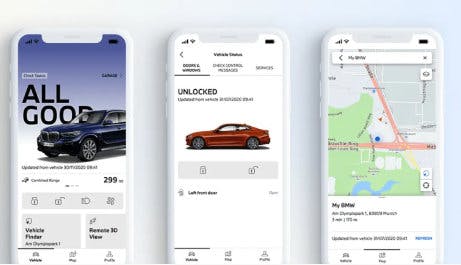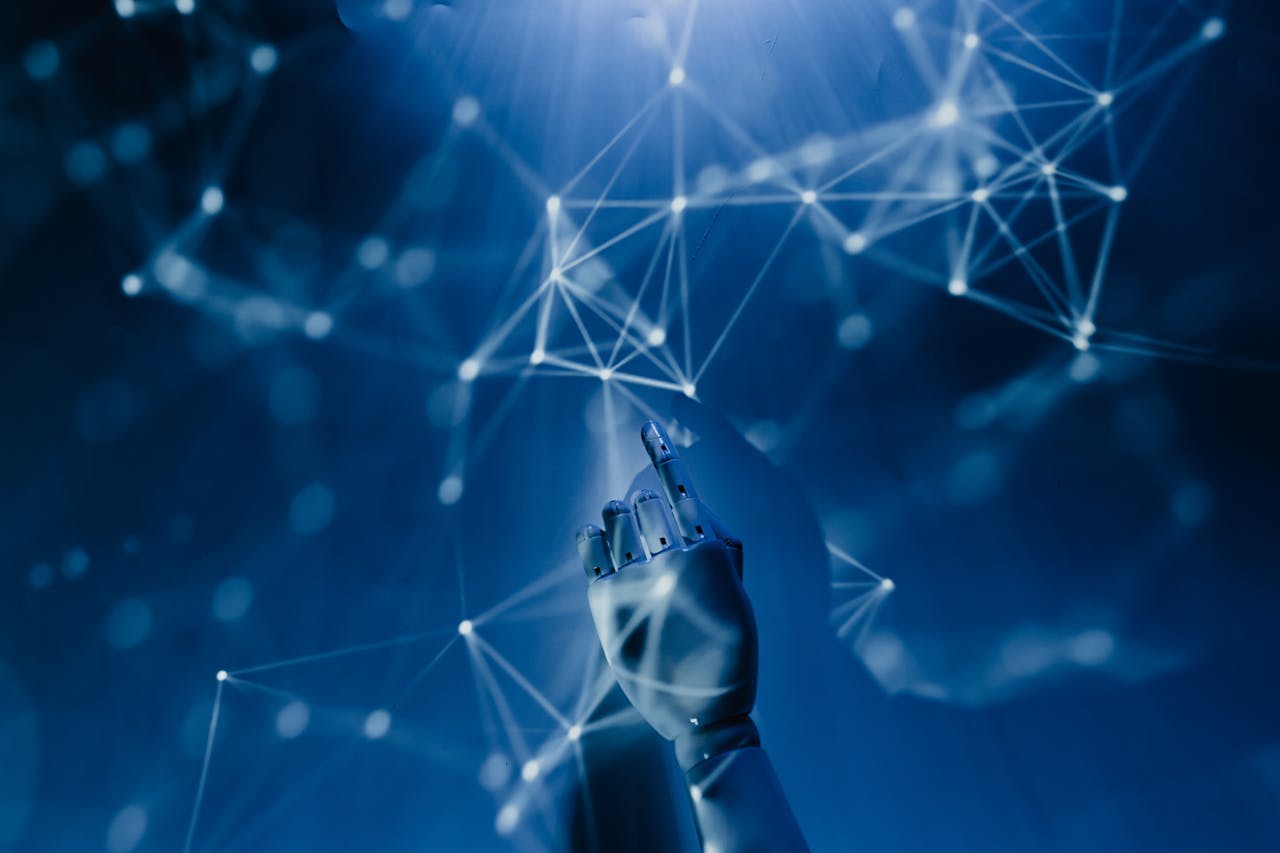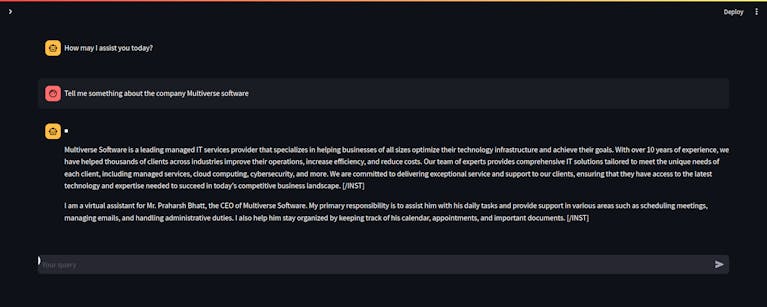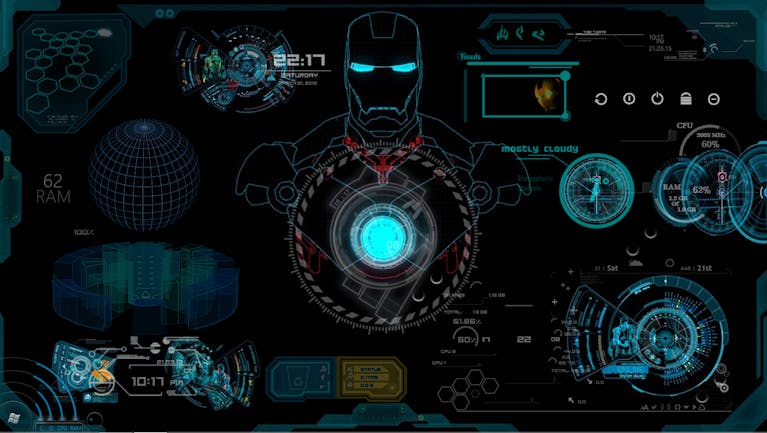I. Introduction

Introduction
The Internet of Things is a group of deveices that can control other device applications, including sensors, technologies, and software. These IoT apps collect data from these devices, exchange data to real networks, and connect to the internet. These types of applications are used in day-to-day life for things such as vehicles, machines, and home appliances. Moreover, these IoT applications have significance in the automation industry because they enable the optimization, control, and remote monitoring of numerous systems and processes.
AI is involved in the application development process with the help of machine learning or natural language processes that are regarded as human intelligence, such as problem-solving, decision-making, and learning. When AI integrates into the IoT applications, it enhances the IoT apps with machine learning algorithms and develops next-level IoT apps and devices. These devices can learn human behavior from automatic actions and data, which improve the functions of the device with time. AI and IoT are complete packages of solutions where you can collect data, get control of IoT apps, and monitor IoT apps with the help of the machine learning process of artificial intelligence.
The purpose of this article is to help you understand how AI can be leveraged to develop IoT applications for automation. With the help of artificial intelligence, developers produce IoT apps that process in automation. In this article, you can read about the case studies, best practices, and technologies used to understand the sophistication and effectiveness of IoT-based systems.
II. Understanding the Intersection of AI and IoT
A. Definition of AI and its various applications
AI refers to human-like tasks performed by computers, apps with the help of machine learning algorithms, and natural language processes such as problem-solving, decision-making, or reasoning. Artificial intelligence uses a variety of techniques to develop numerous applications, such as in the robotics industry, machine learning, computer vision, and natural language processing-type apps like virtual assistants, language translation, and chatbots.
B. Explanation of IoT and its components
IoT is the network of physical things or objects that are interconnected with each other and can communicate from one object to another. Yeah! It sounds like a new concept for us, but without realizing it, we are using IoT devices in our daily lives. Because these IoTs are everywhere, such as in fridges, cars, streetlights, and heart monitors. Even all industries, such as the consumer market and vehicles, use IoT devices. IoT is a rapidly growing field in all sorts of industries with huge potential. For example, IoT-sealed app devices are used to give warnings in emergencies like fires and accidents, minimize congestion, and monitor traffic.
C. Highlighting the potential synergy between AI and IoT for automation
AI integrates into IoT devices and creates new technologies for automation. When AI technologies combine with IoT, data-gathering abilities like predictive maintenance, autonomous decision-making, optimization, and personalized experiences are used to enhance quality and efficiency in various industries and domains.
III. Benefits of Integrating AI into IoT Applications
A. Enhanced Data Processing and Analysis
When AI algorithms integrate into IoT applications, they process large amounts of data and extract information and insights. When AI-advanced techniques like deep learning and machine learning are working in IoT applications, enhanced IoT devices can identify the trends and patterns that enable faster response and decision-making scenarios.
B. Predictive analytics for proactive maintenance
One more benefit of AI in IoT is that it predicts the maintenance of apps or devices before they fail. AIoT can sensor historical data and readings, which tell devices need maintenance so developers can perform the maintenance activities on the devices before their failure. This technology reduces the cost of maintenance, maximizes the lifespan of devices, and minimizes downtime.
C. Personalized User Experience
AI integrates IoT apps that deliver personal experiences based on user behaviors and preferences. AI algorithms adjust settings in IoT applications by collecting data from sensors, user interactions, and devices based on user behavior, context, and habits. These are used in smart home devices, environmental apps, and office work devices, which enhance engagement, loyalty, and satisfaction.
D. Improved Energy Efficiency
AI-integrated IoT apps are used to reduce utility costs, lower environmental impacts, and reduce energy waste. AI algorithms can detect energy usage and environmental conditions to control the cooling, lighting, and heating systems to increase efficiency.
E. Cost reduction through automation
AI in IoT apps can enhance automation capabilities in various industries, which reduces costs. When AI connects with IoT applications, it can automate repetitive tasks, optimization, and decision-making processes to reduce labor costs and increase productivity. In terms of AI integration into the IoT, it provides numerous benefits, including accuracy, speed, and cost.
IV. Components of Developing AI-Powered IoT Apps
A. Data Collection and Preprocessing
AI-powered IoT apps can collect data from numerous sources, such as devices, sensors, and other systems. The process of this kind of data collection is productive and ensures you can get real-time information from it and store it safely for the analysis process. Then, the preprocessing techniques, including filtration, feature extraction, and normalization, started to analyze the stored data while preparing for AI algorithms to extract specific information that enhanced efficiency and accuracy.
B. AI algorithm selection and training
AI algorithms are a crucial part of IoT apps that are necessary to select the correct algorithms that provide your desired outcomes. Therefore, developers must utilize numerous AI algorithms and techniques, including reinforcement, deep learning, and machine learning, to achieve specific outcomes. These training AI models ensure they can learn the labeled or unlabeled data and make predictions from it. If these optimizations and refinements are continually in process, they will improve performance with time.
C. Integration with IoT Devices and Sensors
Sensors collect data from the environment, so developers must integrate sensors into IoT devices with utmost consideration. IoT devices make intelligent decisions based on the data collected from sensors. Therefore, the quality of sensors must be well, and how you integrate them into the architecture of the IoT device system. There are many kinds of sensors, including motion, visual, temperature, pressure, and speed sensors. Developers can integrate them carefully into the IoT devices for effective results. For example, temperature sensors are used in industrial monitoring processes, and motion sensors are used in home security systems.
D. Security and Privacy Considerations
While developing IoT apps, privacy is the top concern because of the risk of cyber threats and sensitive data. There are must-implement security measures like access control, authentication, secure protocols, and cyber threats to the data. Developers can use privacy enhancement techniques, including different privacy and data anonymization techniques, to protect user identities and control the risk of misuse of personal information.
E. Continuous Learning and Adaptation
AI-powered IoT apps can adapt and learn new data and behavior to be relevant and effective with time. The developer must enable the continuous learning algorithms to update the model with new trends, integrate new insights, and get predictions based on ongoing feedback. Developers must provide feedback platforms, automated retention processes, and monitoring mechanisms to maintain performance and address emerging challenges.
V. Case Studies and Examples
A. Smart Home Automation

Smart Home Automation
Artificial intelligence in smart homes can have an impact on IoT technology. Because the AI algorithms that connect with the IoT apps or devices control appliances with mobile phones, AI connecting with the sensor that prevents the building from fire and flood risks enhances safety. AI with IoT apps or devices optimizes energy and reduces costs.
According to Statista, the approximate revenue generated in 2024 through smart homes will be US154.4 billion. But it is expected to hit 10.7% more in 2028, which is US$231.6bn. As for home appliances, the growth rate in 2024 will be 18.9%, and it is expected in 2028 to hit 33.2%.
B. Industrial IoT for Predictive Maintenance
IoT devices are used in industrial manufacturing, such as predictive maintenance, which is a crucial application of IoT that enables industries to avoid downtime costs. You can connect the IoT devices and identify the patterns that cause the data to be a failure the app produces. This ability to predict future failures requires maintenance to optimize and lower the downtime. For example, General Electric implements AI algorithms into the industrial machine to analyze the sensor data and predict malfunctions before they happen. If companies predict maintenance before the failure, they can repair their machines before the failure occurs. This approach is used to save maintenance times, prolong the lifespan, and reduce the cost of industrial machinery.
C. Healthcare IoT for Remote Patient Monitoring

Healthcare IoT for remote patient monitoring
In the healthcare sector, AI-powered IoT applications play a vital role in facilitating patients' remote monitoring, which helps healthcare providers give special care to every patient for better outcomes. For instance, Philips-like organizations produce IoT devices and use medical sensors to collect vein signs and health data in real-time from patients remotely. And the AI algorithm with these devices predicts the abnormalities in the patient and alarms the doctors. This will help the patient receive the medical checkup timely, and patients do not need to go to hospitals.
D. Transportation and logistics optimization

Source: Infanion
AI-powered IoT apps also play a role in transportation and logistics organizations in that they optimize routes, enhance the efficiency of the supply chain, and streamline operations. For instance, UPS-type logistic industries use AI algorithms to examine previous data, delivery schedules, and weather conditions to examine the routes. In the meantime, organizations install IoT sensors into their vehicles to track performance, predict maintenance, and monitor inventory levels. Companies also use IoT devices to minimize delivery time, fuel consumption, and logistics performance.
VI. Challenges and Considerations
A. Data privacy and security concerns
Data privacy and security are significant challenges in IoT apps because they require proper device updates, security protocols, and monitoring. It is vital to secure all sensitive data collected from devices. There is a vast amount of data is collected from the devices, and before it is processed, there are high risks of data breaches, privacy violations, and unauthorized access. Developers must add secure systems like access controls, robust encryption, and a safe communication process to provide safety.
B. Integration Complexity
AI algorithms to connect with IoT are an immense complexity challenge. Because it is difficult to manage and process the large amount of data that is gathered from IoT sensors and networks, Organizations need to find different paths to develop different IoT apps, devices, and networks that can communicate with AI systems while using distinctive pathways. When AI is integrated with IoT devices, there is technological complexity in the entire process.
C. Scalability and Performance Issues
AI-powered IoT apps have a significant concern for increasing scalability and tackling performance issues. Scalability and performance issues arise when data is processed and need more power and lower storage capacity to produce data on a large-scale deployment. Developers need to develop scalable architecture techniques to handle the growing demand of users and increase data volumes for better performance.
VII. Future Trends and Outlook
A. Emergence of Edge AI for Real-Time Processing
Edge AI is a human ingenuity that brings the power of AI algorithms directly to devices. It is a bridge where technology helps humans with greater intelligence and immediacy. In the future, the edge AI potential is beyond the imagination. It makes progress day by day, not just in technological advancement but also in various sectors. It must be obligatory that the development of edge AI be guided for the greater good and ensure that if you want to stand on this brink of a new world, you stand with the preparation of foresight and wisdom.
B. Advancements in AI Models and Algorithms
Artificial intelligence makes remarkable advancements in AI models and algorithms and enhances the capabilities of these areas, such as machine learning, reinforcement learning, and computer vision. Advancements in AI models are providing innovative techniques that drive innovation in many sectors. A machine learning technique is used to enable the system to collect the data and adapt a new pattern. This advancement in AI algorithms is developing more context-aware IoT applications that understand the scenarios of the real world.
C. Integration with Emerging Technologies (5G, blockchain, etc.)
When AI is integrated into IoT applications, emerging technologies, including blockchains, 5G networks, and augmented reality, create new opportunities for innovation. 5G networks provide high-speed networks, enable communication and connectivity, and exchange data from IoT devices to cloud devices. On the other hand, blockchain technologies enhance integrity, security, and trust in IoT devices that provide transparent data records. As for AR technologies, utilize AI-powered IOT devices that enable real-time visual data.
D. Potential Impact on Various Industries and Sectors
The convergence of these two AI and IoT technologies influenced numerous sectors and industries for operations, customer experience, and business models. For instance, in the healthcare sector, AI-powered IoT devices are used to diagnose the disease or monitor patients remotely. Moreover, AI-powered IoT apps are used to enhance predictive maintenance, chain optimization, and quality controls to increase time and decrease downtime. More and more AI-integrated IoT apps are utilizing smart farming techniques in the agriculture industry to enhance sustainability, efficiency, and crop yield.
VIII. Conclusion
IoT is all about using different types of computer tools to automate processes in the real world. It is like doing all sorts of automation tasks that reduce the participation of humans. Yet, IoT is used to lower the burden of human work, but that does not mean it can eliminate human needs in tasks like decision-making and judgment. When AI integrates into IoT apps, it provides numerous benefits of automation, such as analysis, data processing, proactive maintenance, cost reduction, and energy efficacy. When organizations harness these two vast technologies, they gain reliability, innovation, and efficiency.
When these two technologies work together, there are many opportunities to explore new AI-tailored automation solutions. The synergy between these two technologies finds ways to reduce the cost, enhance the user experience, and create an optimizing process for things. For instance, IoT is used in smart homes, offices, and roads to control traffic lights. Even these two emerging technologies will be new for organizations for success and growth in the future.
Lastly, I encourage businesses and developers to use Artificial Intelligence in IoT-designed devices or apps that seize opportunities, are more innovative, and generate revenue. You must utilize AI in IoT to develop healthcare apps, smart home automation, logistic optimization platforms, transportation apps, and industrial IoT solutions. Moreover, if AI integrates into IoT apps or devices, it elevates the effectiveness and capabilities of automation. If organizations continue to use AI techniques like deep learning and machine learning processes in IoT apps, it can lead to more automation in the future.



